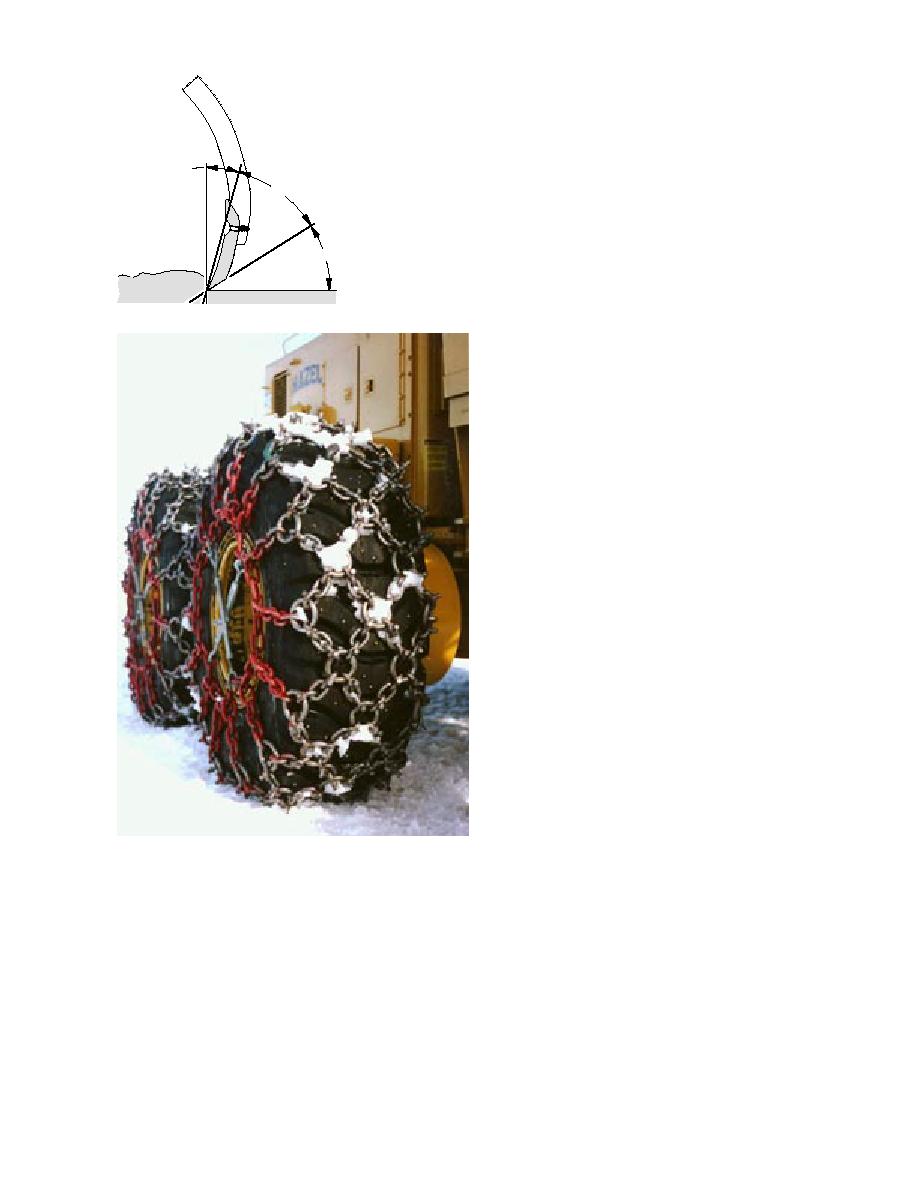
During rough grading, we easily maintained 5
km/hr (3 mph) with the grader at a gross mass of
23,500 kg (52,000 lb).
We also discovered that it was very helpful to
sharpen the edges of the grader blade daily with
15.2
a hand-held disk grinder. The chisel-tooth edges
42
dulled surprisingly fast when grading the ice,
principally because of the large amount of min-
Figure 36. Atti-
eral matter trapped in the ice (Fig. 38). Although
tude of grader
laborious, daily facing of the chisel-teeth with a
32.8
blade and chisel-
grinder increased tremendously the efficiency of
Natural Ice Surface
teeth during
the grader.
Graded Ice Surface
grading.
The snowblower was used to remove the ice
spoil windrowed by the grader. Since most of the
spoil material consisted of fist-sized chunks
of ice, we were cautious about the rate of
advance with the snowblower. The Rolba
blower, however, proved to be robust enough
to allow ice ingestion at a good rate. Ingestion
of the ice created significant vibration through-
out the snowblower and prime mover, but
only a few parts were broken, even after 1000
hours of operation and the processing of 1
million tons (907,000 tonnes) of ice. Once the
snowblower removed the spoil from this grad-
ing, a mostly exposed surface of ice remained
(Fig. 39).
Other devices could be used to remove the
spoil (e.g., bulldozers, bucket loaders, grad-
ers), but the blower has the advantage of mov-
ing the debris a large distance and spreading
it so that no ridges remain. The blower is sus-
ceptible to winds, and at times we were ham-
pered in our progress by not being able to cast
material to one side of the runway because of
stiff winds. In choosing a snowblower for such
a task, ruggedness must be a prime require-
ment. Blowers designed for opening roads in
mountainous regions and that are equipped
to ingest rocks and trees (such as is often
present in avalanche paths) are suitable. The
speed and capacity of the snowblower should
be carefully matched with the grader. There
are many issues that can benefit from this
Figure 37. Aggressive tire chains as used in logging in-
matching. By having the ability to maintain
dustry installed on motor grader to reduce slip during ice
pace with the grader when working, wind-
grading.
rows (which can trap additional drift snow)
traction requirements. Through this process, and
are never present for long periods of time. By not
the results of later testing with refined chisel-
setting long, the snow in the windrows is not
tooth design patterns and the addition of aggres-
allowed to setup and become hard after the work-
sive tire chains (Fig. 37), we calculated that an
ing process of the blade, thus reducing the power
efficient ice-cutting blade, held in the proper po-
needed to remove pick up and throw the snow.
sition, will require 122 kW per lineal meter of
Additionally, operators can remain in visual con-
actual cutting edge (50 hp per lineal ft) to propel.
tact with each other in case of a breakdown, an
37



 Previous Page
Previous Page
